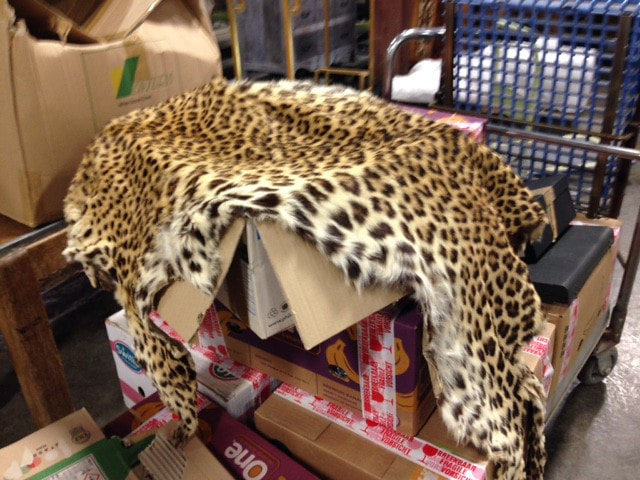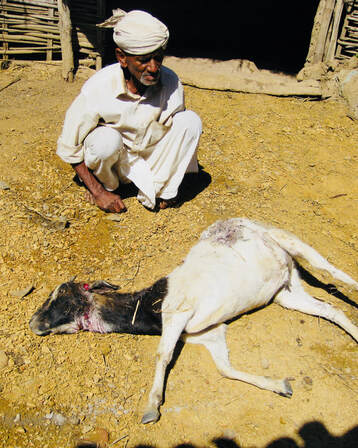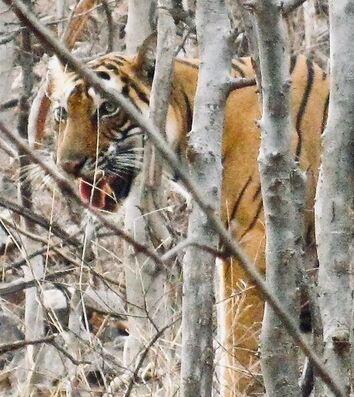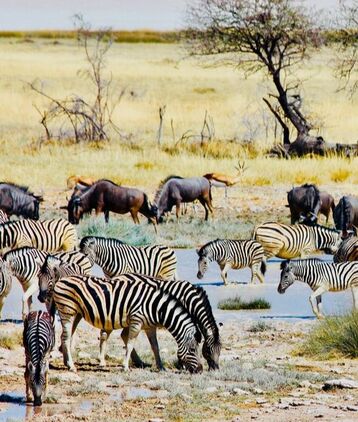Jump to: WILDLIFE TRAFFICKING & TRADE | human-wildlife coexistence | carnivore ecology | biodiversity conservation
My research, policy and practice spans broad themes related to biodiversity management and conservation, including conservation policy effectiveness, protected area management, spatial risk modeling and mapping, predator-prey interactions, trophy hunting and the ecology of big cats, birds and frogs. Below are highlights from my areas of expertise:
|
The legal and sustainable trade of wildlife and their products is essential to human subsistence, society and culture, yet is paralleled by a multi-billion-dollar industry of unlawful harvest and trafficking that threatens ecosystems, international security, economic stability, public health and the safety and welfare of local communities. Overexploitation is the second greatest driver of biodiversity decline according to the IPBES Global Assessment, affecting thousands of plant and animal species, meaning that any strategy seeking transformational change for our planet must address wildlife trafficking. My work with the U.S. Fish & Wildlife Service’s Combating Wildlife Trafficking Branch informs international policy and conservation practice to help keep wildlife in the wild.
|
Research highlights:
- Systems approaches to combating wildlife trafficking: Expanding existing frameworks to facilitate cross-disciplinary collaboration in Frontiers in Conservation Science (2021)
- What is the evidence that counter-wildlife crime interventions are effective for conserving Africa, Asian and Latin American wildlife directly threatened by exploitation? A systematic map protocol in Ecological Solutions and Evidence (2021)
|
Expanding human populations, shrinking habitats and, in some places, recovering wildlife lead people and animals to interact. Especially with carnivores, contact can lead to conflict when animals threaten human safety or livelihoods. The human communities living alongside wildlife are commonly socially or financially vulnerable and isolated from management innovation, leading them to rely on cheap, fast and often lethal forms of predator control that cause wildlife declines and only temporary solutions. My collaborative research with Defenders of Wildlife, the Yale School of the Environment, University of California-Berkeley, Cornell University and others advances tools and theories to enable people and wildlife to sustainable coexistence in three areas:
|
Research highlights:
- Ecological framework for contextualizing carnivore-livestock conflict in Conservation Biology (2020)
- The best available science for preventing carnivore predation on livestock in PLOS Biology (2018)
- Human perceptions mirror realities of carnivore attack risk for livestock in PLOS One (2016)
Carnivore ecologyPredators play vital roles in driving ecosystem structure and function. By affecting the behavior, distribution and mortality of prey and other predators, carnivores shape the trophic interactions that comprise food webs. Predator effects can be anticipated based on functional traits of the species, such as an its hunting mode (e.g., active vs stalking), or characteristics of the individual, such as its age or life stage (e.g., dispersing or nursing). Understanding how these attributes translate into behavior and ultimately ecological interactions can provide insights for more effectively managing wildlife, especially in the face of human activity and pressures. I have partnered with colleagues at Panthera, WWF, the Wildlife Institute India and other institutions to study carnivore ecology and behavior and how species interactions influence food webs and approaches for management.
|
Research highlights:
- Lions and leopards show no spatial, temporal or demographic consequences of interspecific competition in Journal of Animal Ecology (2018)
- Caching reduces kleoptoparasitism in a solitary, large felid in Journal of Animal Ecology (2017)
- Fear on the move: predator hunting mode predicts variation in prey mortality and plasticity in prey spatial response in Journal of Animal Ecology (2013)
Biodiversity conservation
People have transformed the planet's land, sea and climate to the extent that biodiversity is declining faster than ever before in human history. We need innovative solutions that are effective across species and scale-able across systems. Given the limited resources in conservation, we need to prioritize goals, optimize partnerships and evaluate outcomes to ensure we save what matters most. And to achieve long-term, sustainable solutions desirable by communities, we must collaborate with non-traditional stakeholders to integrate local values and beliefs into conservation approaches. My research with Defenders of Wildlife, Panthera and other institutions explores the drivers of species declines and the solutions to conserve our planet's most threatened species, addressing topics such as:
|
Research highlights:
- Solve the biodiversity crisis with funding in Science (2019)
- The price of protection: More than $1 billion needed annually to secure Africa's protected areas with lions in PNAS (2018)
- Nature divided, scientists united: U.S.-Mexico border wall threatens biodiversity and binational conservation in BioScience (2018)




